Movie courtesy of NASA/Goddard Space Flight Center - Conceptual Image Lab.
Geomagnetic Substorm Triggered by CME from Sun
This movie opens with a close-up view of the Sun. The solar wind streams outward into interplanetary space. Our view shifts to Earth which is surrounded by the planet's magnetosphere (magnetic field lines are shown in blue). A coronal mass ejection (CME) from the Sun arrives from the left, buffeting and warping Earth's magnetosphere. Some solar magnetic field lines (shown in orange) link up with Earth's magnetic field.
As we zoom in on Earth, we see that some loops in Earth's magnetic field on the side away from the Sun get compressed and pinched off. This process, called magnetic reconnection, releases bursts of particles which stream towards Earth along magnetic field lines. The particles in these "geomagnetic substorms" collide with gas molecules in Earth's upper atmosphere. The collisions release energy, which we see as the glowing lights of the aurora (Southern and Northern Lights).
Right-click (Windows) or Option-click (Mac) on one of the following links to download a copy of this video in either the QuickTime (62 MB) or MPEG (16.7 MB) format.
You might also be interested in:
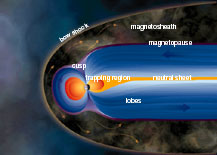
The Earth has a magnetic field with north and south poles. The magnetic field of the Earth is enclosed in a region surrounding the Earth called the magnetosphere. As the Earth rotates, its hot core generates
...more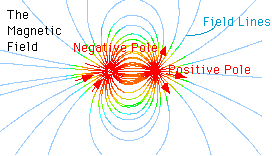
The force of magnetism causes material to point along the direction the magnetic force points. This property implies that the force of magnetism has a direction. As shown in the diagram to the left, the
...more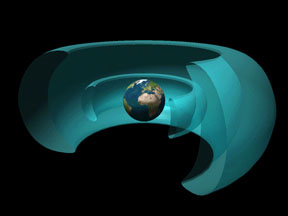
One main type of radiation, particle radiation, is the result of subatomic particles hurtling at tremendous speeds. Protons, cosmic rays, and alpha and beta particles are some of the most common types
...more
The thermosphere is a layer of Earth's atmosphere. The thermosphere is directly above the mesosphere and below the exosphere. It extends from about 90 km (56 miles) to between 500 and 1,000 km (311 to
...more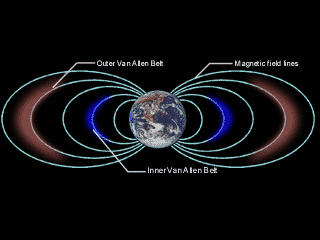
The belts of trapped radiation above the Earth's atmosphere, but within the magnetosphere, were first detected by James Van Allen in 1958. Therefore these belts are also known as Van Allen Belts. When
...more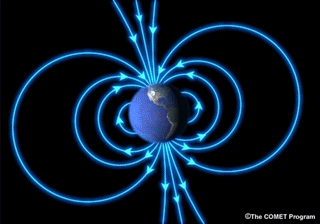
Earth has a magnetic field. If you imagine a gigantic bar magnet inside of Earth, you'll have a pretty good idea what Earth's magnetic field is shaped like. Of course, Earth DOESN'T have a giant bar magnet
...more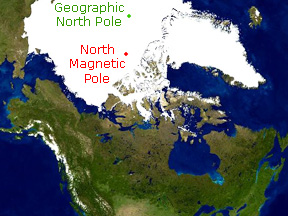
Earth has a global magnetic field that is approximately, though not exactly, a dipole field (like a bar magnet) with a north pole and a south pole. Earth's North Magnetic Pole (NMP) is not in the same
...more














